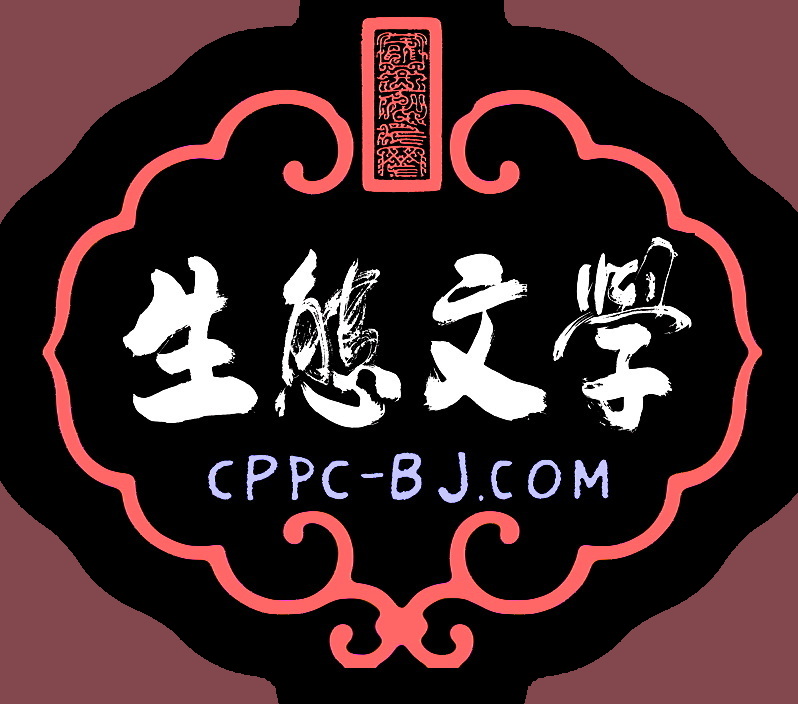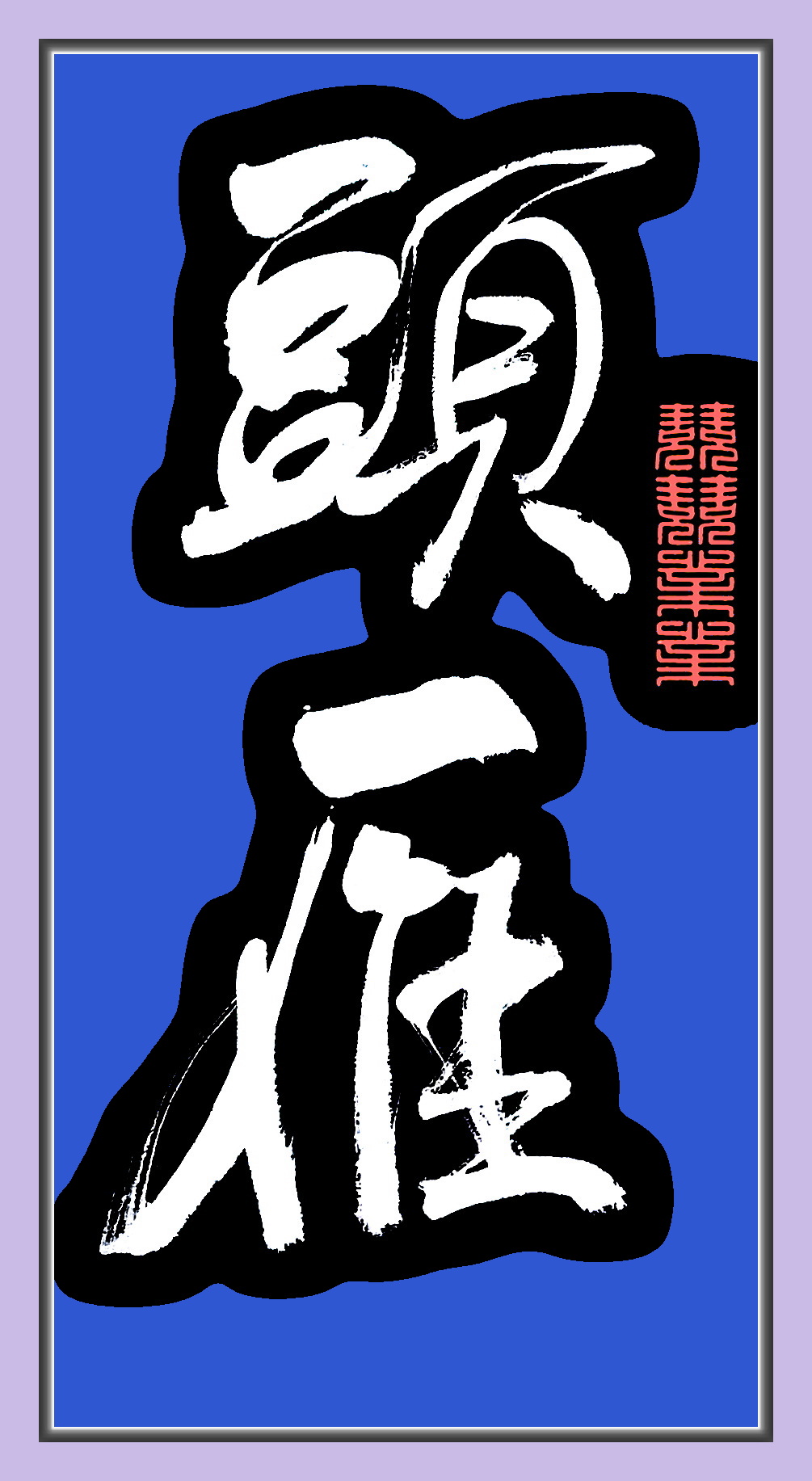
主旨栏题:美学国土
栏头署书:乔惠民
国土名片网钤印:王子盧
插播导读:国土名片网小编芬儿、新宇、张扬
一匹穿山甲(节选)A Pangolin (Excerpt)
《英语世界》杂志 2022年6期
李青松 辛勤 许景城
【导读】
李青松多年致力于生态保护工作和生态文学创作。由于工作关系,他深入基层,收集第一手资料,以敏锐的视觉、细腻的描述、幽默的语言,带着独特的文人情怀,将自然界的生物密码有效地传递给读者,因此他的报告文学有着无与伦比的可信性与可读性。其作品充满了特有的人性之美和对大自然的敬畏与尊重,意在告诫人们自然界有其固有的秩序与生存法则,人为的过度干扰不仅会打乱自然界的秩序,破坏生态平衡,而且最后人类还会自食其果。
本文节选自其散文《一匹穿山甲》。该文2017年发表于《文学报》,讲述了上世纪九十年代初作者第一次在中越边境见到穿山甲的所闻所思。作者发出了一个生态文人充满忧伤却铿锵有力的呐喊,希冀读者阅后能够引发共鸣,深入思考人类到底在自然界中扮演何种角色,如何正确处理人与非人类动物之间的关系,以及如何构建和谐的、可持续的地球命运共同体。
---------------------------------------------------------------------------
---------------------------------------------------------------------------
穿穿穿。遇土穿土,遇水穿水,遇山穿山。穿穿穿。它不太机灵,有些笨拙,执拗,也有一股傻劲儿和憨劲儿。
此物甚奇——名曰:穿山甲。
我头一回见到穿山甲,是在上世纪九十年代初期。广西中越边境一处山坳集市,蜿蜒数里。摊贩出售的东西多为农产品,诸如香蕉、杧果、龙眼等水果,还有鸡、鸭等活物以及农具、刀具等手工制品。一个穿着草鞋,头戴斗笠的越南少年蹲在角落里。他的面前置一竹笼,竹笼里装着长着甲片、身体蜷缩成一团的动物。甲片有点像刚出土的古代铜钱,黏着泥土和草屑,一片一片叠加在一起。三匹。一大两小。其中最小的那匹,小小的眼睛正在看着我,还眨呀眨的,眼角分明流着泪滴。——我的心里咯噔一下。
同行的朋友告诉我,那就是穿山甲。
多少年来,穿山甲眼角流着泪滴的情景,如在眼前,挥之不去。
穿山甲属于地栖性哺乳动物,体形狭长,像是旧时乡间老榆木疙瘩做成的面相粗鄙古怪的犁杖。穿山甲四肢短粗,全身有甲片,尾巴扁平而长,如鳄尾般坚实有力。背面呢,略略隆起呈弓状,是随时准备发力挑起事端吗?当然不是。它可从来不去惹是生非。它毫无凶相,更不会主动向天敌发起进攻。当遇危险时,它唯一的手段就是防御——不是弹跳,不是外展,而是内敛,收紧,蜷缩成团呢。如果是山坡,它便就势一滚,逃之夭夭了。我忽然悟到,在所有几何圖形中,球形或许是最便于求生的吧。
虽说坚硬的甲片是它的防御武器,但如果说穿山甲只会防御也不全对。当穿山甲把自己蜷缩一团时,也会利用肌肉控制甲片进行切割,像哗哗转动的电锯锯齿一样。雄狮、豹子面对它无处下口。即便下了口,嘴巴也会被割破,鲜血淋漓。蟒蛇对它也奈何不得,乖乖绕开,该干嘛干嘛吧。
……
多年前,我在南方山区走动时,一些老人说,早年间,穿山甲并不是什么稀罕物,一个猎户一个冬天能抓二十余匹,供销社专门给药厂收购,一匹穿山甲也就卖三五块钱。
2000年之前,中国野生穿山甲种群尚有相当的数量。在云南、广东、广西、海南诸省区的山区,山民还能见到穿山甲觅食的身影或打洞推出的新鲜土堆。此后几年,野外穿山甲的数量谜一样骤减。至2005年,穿山甲曾广泛分布的一些山区,野外调查种群数量居然显示为零。也就是说,野外观测已经很难见到穿山甲的踪影了。洞穴也皆旧窟,而非新迹了。
有人说,陶弘景是罪魁。倘若他当初不把穿山甲写进《名医别录》,穿山甲的命运可能就是另一种情况了。而李时珍也罪责难赦,《本草纲目》里少写几段,少写几个字不行吗?写来写去的,穷写什么呀?啪啪!应该给说这样话的人两个耳光。两个不够,还可以再加一个。假如人类变成蚂蚁,穿山甲该是多么欢喜!假如地球倒回洪荒时代,我们该是多么快乐!——假如,假如,可是从来就没有假如的世界啊!
穿山甲,是固有的“穿”性害了自己吗?陶弘景也好,李时珍也罢,他们的本意不是把穿山甲斩尽杀绝,而是利用其“穿”性,解除“堵”的问题。但糟糕的是,这个世界“堵”的问题越来越多。因为“堵”,造成了我们肌体内里和灵魂深处的某个地方正在发生着病变——可是,我们什么都看不见了——没有了方向感,也没了向内的反省和向外的审视,看不到别人,也看不到自己。我们每天处在焦虑之中,以至于深呼吸都是一种奢侈,甚至需要足够的勇气了。
穿山甲的问题,从来就不是它自己的问题,而是我们的问题——无论如何,我们那张贪吃的嘴是摆脱不了干系的。然而,我还是要怯怯地问一句,山林里的蚁族还有那么多吗?山林里的枯木、倒木还有那么多吗?生物的多样性哪里去了?——山林里到底发生了什么事情?当我们为了某个目的,而无休止地使用杀虫剂或者农药时,是否也灭掉了穿山甲赖以生存的食物链?——我要说,那些看起来温柔的杀虫剂和农药,实际上都是残忍无比的。——“能看见的毒都不是最毒的,看不见的毒才是最毒的。”
经验的获得总是晚了一些。当我们觉得某条经验有用时,实际上,它已经快没用了。即便这条经验上升到冷面的法律层面,即便这条经验上升到刚性的国际公约层面。
野生穿山甲在中国绝迹了吗?我的心里咯噔一下——不会吧?又咯噔一下——也许真的呢?
我不敢想下去了——心痛万分。
那个竹笼里穿山甲眼角流着泪滴的画面,又浮现在眼前。哀婉而悲伤。我在屋里转着圈圈,一时不知如何是好了。人与穿山甲到底是一种怎样的关系呢?穿山甲虽然有那么灵巧的舌头,却无法告诉我。
在时间的历程中,自然有选择的权利,人类也有选择的权利。但是,当一个脆弱的物种面对人类无边的欲望时,它几乎就没有什么选择的权利了。而这种选择的权利往往只存在人类一方了。
然而,我又分明存著一丝希望——穿山甲是那么坚韧、执拗、憨实,怎么可能说没就没了呢?它一定是藏匿于山林深处的某个洞穴里,躲避着我们,躲避着纷扰和喧嚣,在孤独和寂寞中熬着日月。
或许,我们是应该放弃一些固有的东西,并且应该承担起拯救自然的使命和责任了。因为,悲观和绝望无济于事——“我们实现明天理想的唯一障碍,就是对今天的疑虑。”
穿穿穿——穿破它。
穿穿穿。穿破它的不是穿山甲,不是人类,而是我们那颗日益减少的慈悲之心。
Move, move, move. Through soil, through water, through mountains. Go, go, go. It is a bit clumsy, slightly stubborn, somewhat silly and fairly awkward.
It is a very strange thing, known as “pangolin”.
The first time I saw pangolins was in the early nineties. There was a flea market in Guangxi near the China-Vietnam border, which wound its way for a few miles. Vendors mainly sold agricultural products, including fruits such as bananas, mangos, and longans, and livestock such as chickens and ducks and also crafts such as farm tools and knives. A young Vietnamese boy wearing a pair of straw sandals and a straw hat crouched in the corner. In front of him, there was a bamboo cage which held animals that were fully covered in scales and curled up into masses. Each scale was like an unearthed ancient coin, blemished by soil and grass, and mutually superimposed. There were three of these creatures—one large and two small. The smallest one stared at me, seemingly with tears shining in the corners of its tiny blinking eyes. My heart trembled.
My travelling companion told me that they were pangolins.
Over the years, that tearful pangolin has still lingered in my memory.
The pangolin is a terrestrial mammal, long and narrow in shape, like an ancient glum plough made from gnarled old elm branches in the countryside. Its limbs are stubby. Its body is covered by scales. Its flat and long tail is as solid and powerful as a crocodile’s. Its back is slightly uplifted and curved: is it ready to attack at any time? Absolutely not! It is a harmless and docile creature who never goads its natural enemies. When in danger, it tends to protect itself not by jumping and stretching, but by shrivelling, contracting, and curling up into a defensive ball. If it happens to be on a hill, it can roll down and flee easily. It strikes me that among all geometric shapes, the sphere is probably of the highest survivability.
Although the hard scales serve as the defensive weapon, it is not entirely correct to state that this creature can do nothing but defend. When a pangolin curls up, its muscles can also be employed to control the scales for cutting, like a running serrated blade. In that way, it renders lions and leopards to prey in vain. Even if they make it, their mouths will be notched and bloodied. Even pythons are hopeless against it as well: they usually avoid this type of prey, and proceed for others.
…
Many years ago, when I was on a trip in some southern mountains, a few elders told me that in the early days, pangolins were not rare. A hunter could catch more than twenty of them in a single winter. Local supply and marketing cooperatives specifically purchased them for pharmaceutical factories. A pangolin could only sell for three to five Chinese yuan.
Before 2000, there was a considerable population of wild pangolins in China. In the mountains of Yunnan, Guangdong, Guangxi, and Hainan, villagers would often see pangolins foraging or find newly created mounds due to its digging. A few years later, the pangolin plummeted dramatically in population. By 2005, in some mountainous areas where pangolins had been widely decimated, the population of this creature, as field surveys show, actually totalled zero. In other words, it has been difficult to spot any pangolin in field observation recently. The dens have been deserted and no new life is trailed.
Some claim that Tao Hongjing is the culprit. Had he not written the pangolin into Supplementary Records of Famous Physicians, the fate of the creature would have been different. Li Shizhen is also thought to be blamed for his writing about the pangolin in The Compendium of Materia Medication. As some propose, Li should have cut those bloody depictions out. Slap! Slap! Those who hold this kind of argument should receive a couple of slaps. Oh no, two is far from enough, and more is needed. If humans turned into ants, how joyful the pangolin would be! If the Earth returned to the prehistoric era, how happy it would be!—If, if, but there has never been an “if” world!
Pangolin, is your inherent “breaking” (“healing”) characteristic the cause of your own fate? It is noted that both Tao and Li meant not to kill off all the pangolins, but rather to make full use of its “breaking” nature to address the “blockage” issue in humanity. But unfortunately, the human world experiences more prevalent “blockage” problems that cause the pathological change somewhere deep in our physical body and soul. To this change, however, we have turned our back, losing our bearings and the ability to examine ourselves from within and without, and failing to see others and our own self. Agony is haunting us everyday so that taking a deep breath becomes a luxury, and even requires our fight with adequate courage.
The pangolin problem has always been the problem not of its own, but within humanity. In any case, it is inextricably related to humanity’s gluttony. What’s more, I’m eager but timid to ask: are there still a lot of ants, and withered and fallen trees in the forest? Where on earth did biological diversity go?—What happened in the forest? For our own selfish purposes, we have utilized insecticides and pesticides endlessly. Have they also exterminated the food chain upon which pangolins rely?—I would say that the so-called “environmentally friendly” insecticides and pesticides are, in fact, extremely atrocious cruelty.—“The visible poison perhaps is not the most toxic while the invisible one is for sure the most toxic.”
It is often too late when a lesson is learned. When we feel that some experience is useful, in fact, it may have been useless, even if it rises to be part of code-faced laws, or rigid international convention.
Have wild pangolins been extirpated in China? My heart’s undergoing an abrupt flip—could it be true? Another complete somersault hits my heart—Perhaps that is the reality?
I cannot bear to think further—my heart is completely sunken.
That pangolin in tears in the bamboo cage leaps into my mind’s eye again. Sorrowful and woeful, I walk around in the house, somewhat aimlessly and helpless, pondering: what kind of relationship is it between humans and pangolins? This type of creature, although agile and smart in tongue, is unable to tell me.
Over the course of time, nature has had the right to choose, so have human beings. But when a fragile species is confronted with humanity’s boundless desires, it has almost been left with no right to choose. And the right more often than not exists merely on humanity’s side.
However, a glimpse of hope is still carried in me—the pangolin is so tough, stubborn, and honest. How could it be gone? It must be hiding in a cave in the depths of a mountain, avoiding us and the world of hustle and bustle, and living its life in solitude.
Perhaps it is time for us to relinquish something innate, so called “necessity”, and to take responsibility to save our Mother Nature. Because pessimism and despair are of no avail—“The only obstacle to our ideal of tomorrow is the doubt of today.”
Break, break, break—break through it.
Break, break, break. Break through it. This “break-through” does not result from the pangolin or humanity itself, but comes in the wake of our dwindling compassion.
* 譯者、金融行业从事者。毕业于中国政法大学。上世纪九十年代移居海外,现定居加拿大多伦多。
** 诗人、译者、学者,英国威尔士班戈大学文学批评与翻译学博士,广东外语外贸大学英语语言文化学院教师,阐释学研究院兼职研究员,硕士研究生导师,英国双盲审生态批评期刊《生态公民》(The Ecological Citizen)编委会顾问。
--------------------------------------------------------------

国土名片网编后注】李青松,中国报告文学学会副会长、著名生态文学作家。毕业于中国政法大学法律系。长期从事生态文学研究与创作。出版专著十余部,主要代表作品《开国林垦部长》《遥远的虎啸》《相信自然》《塞罕坝时间》《文冠果》《穿山甲》《贡貂》《万物笔记》《粒粒饱满》《一种精神》《茶油时代》《大地伦理》《薇甘菊:外来物种入侵中国》等。作品曾获徐迟报告文学奖、北京文学奖、百花文学奖、呀诺达生态文学奖等三十余项。发起中国国土经济学会、今日国土生态文学委员会“绿水青山看”系列主题创作活动,指导创作《绿水青山看海淀》、《绿水青山金海湖》、《黄河之约·绿水青山三门峡》、《大美北京·绿水青山》等各专题生态文学活动,主持编年遴选和推介《中国生态文学年选》,打造生态文学和美学国土领域耀眼的范例与金榜。目前,生态文学已成为中国国土经济学会全面推进美丽中国建设和国家生态文明建设的重要力量,李青松是中国生态文学作家群的领军者,被本网cppc-bj.com“美学国土”研学专栏点睛标注为“头雁”。
--------------------------------------------------------------

国土名片网编后注】李青松,中国报告文学学会副会长、著名生态文学作家。毕业于中国政法大学法律系。长期从事生态文学研究与创作。出版专著十余部,主要代表作品《开国林垦部长》《遥远的虎啸》《相信自然》《塞罕坝时间》《文冠果》《穿山甲》《贡貂》《万物笔记》《粒粒饱满》《一种精神》《茶油时代》《大地伦理》《薇甘菊:外来物种入侵中国》等。作品曾获徐迟报告文学奖、北京文学奖、百花文学奖、呀诺达生态文学奖等三十余项。发起中国国土经济学会、今日国土生态文学委员会“绿水青山看”系列主题创作活动,指导创作《绿水青山看海淀》、《绿水青山金海湖》、《黄河之约·绿水青山三门峡》、《大美北京·绿水青山》等各专题生态文学活动,主持编年遴选和推介《中国生态文学年选》,打造生态文学和美学国土领域耀眼的范例与金榜。目前,生态文学已成为中国国土经济学会全面推进美丽中国建设和国家生态文明建设的重要力量,李青松是中国生态文学作家群的领军者,被本网cppc-bj.com“美学国土”研学专栏点睛标注为“头雁”。
